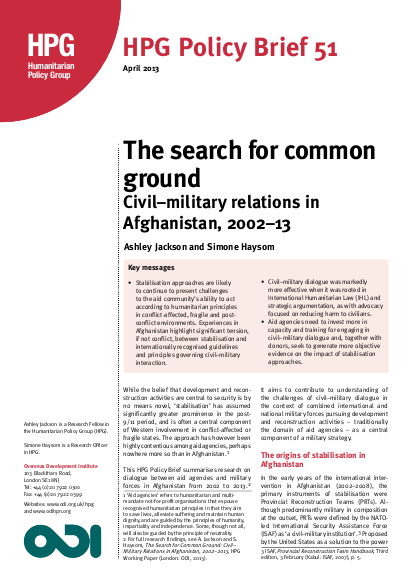
Key messages
• Stabilisation approaches are likely to continue to present challenges to the aid community’s ability to act according to humanitarian principles in conflict-affected, fragile and post-conflict environments. Experiences in Afghanistan highlight significant tension, if not conflict, between stabilisation and internationally recognised guidelines and principles governing civil–military interaction.
• Civil–military dialogue was markedly more effective when it was rooted in International Humanitarian Law (IHL) and strategic argumentation, as with advocacy focused on reducing harm to civilians.
• Aid agencies need to invest more in capacity and training for engaging in civil–military dialogue and, together with donors, seek to generate more objective evidence on the impact of stabilisation approaches.